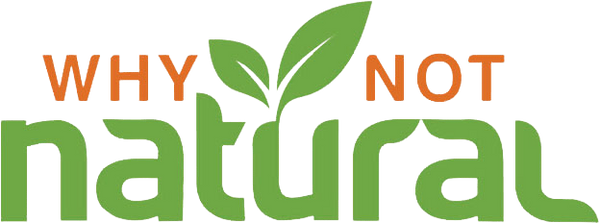Iron deficiency anemia is a common condition, with millions affected around the world (1). However, it's a condition often not immediately recognized due to its subtle onset.
Symptoms like fatigue, poor concentration, shortness of breath, dizziness, headaches, and cold hands and feet could be easily overlooked. Diagnosis is typically confirmed through blood tests assessing hemoglobin and hematocrit levels.
The good news: it's possible some diet and lifestyle changes may be causing poor absorption. You may be able to reverse your deficiency by making a few tweaks in your routine, and what you consume with iron!
Dietary Factors that Impact Iron Absorption
These three dietary factors can impact iron absorption:
- Tannins: These compounds in tea and coffee hinder iron absorption (6).
- Phytates and oxalates: These substances in certain high-fiber foods like beans, whole grains, and legumes, as well as certain vegetables and spices, can bind with iron and inhibit absorption (7).
- Calcium: High calcium intake can interfere with dietary and supplementary iron absorption (8). You should take a calcium supplement at a different time of day from when you consume iron.
And one myth you may have heard that actually does not improve iron absorption: taking it with vitamin C. It's been shown that the difference is marginal at best, so if you don't want to take these two vitamins together, don't sweat it.
Other Causes of Iron Deficiency
While inadequate dietary iron intake is the most common cause of iron deficiency, several other factors also contribute.
- Increased iron needs: Growth spurts in infancy and adolescence, and pregnancy increase the body's iron requirements (2).
- Blood loss: Conditions leading to blood loss, such as heavy menstruation or internal bleeding, can deplete iron stores (3).
- Poor absorption: Disorders like celiac disease or surgeries like gastric bypass can limit iron absorption (4).
- Certain medications: Drugs like proton pump inhibitors, used to reduce stomach acid, can interfere with iron absorption (5).
Improving Iron Levels: From Diet to Cookware
Here are four strategies for addressing iron deficiency:
- Iron-rich foods: Incorporate both animal and plant-based iron sources in your diet. Animal sources like meat, poultry, and fish are rich in heme iron, easily absorbed by the body (9). Plant sources like lentils, beans, and fortified cereals, contain non-heme iron and are often accompanied by phytates which can reduce iron absorption (7).
- Iron supplements: In cases of significant deficiency or inability to consume adequate iron from the diet, iron supplements may be recommended (10).
- Optimal pairing: Try to consume iron blockers like coffee, tea, and high-calcium foods separately from your iron intake.
- Cast iron cookware: Cooking food, especially acidic ones like tomato sauce, in cast iron cookware can increase its iron content (12).
Best Sources of Iron
Animal sources of iron include lean meat, poultry, and fish. In contrast, plant sources include lentils, chickpeas, beans, tofu, cashew nuts, chia seeds, ground linseed, hemp seeds, pumpkin seeds, kale, dried apricots, and figs. Fortified foods, such as cereals, are another excellent source of this vital mineral (13).
Iron without Phytates, Oxalates, or Tannins
Some sources of iron, particularly animal sources, are less likely to contain phytates, oxalates, or tannins. These include lean meats, seafood, and poultry (9).
By understanding the intricacies of iron absorption and implementing thoughtful dietary strategies, you can ensure your body gets the iron it needs to produce healthy red blood cells, supporting overall health and energy levels.
Don't forget to subscribe to our newsletter to learn which supplements to take, how to combine them for maximum benefit, and other health tips to boost your energy and vitality. Plus, discover natural strategies to reduce hormonal imbalances, stress, and anxiety. Click here to get started!

Resources
-
Camaschella, C. (2015). Iron-deficiency anemia. The New England Journal of Medicine, 372(19), 1832-1843.
-
Stoltzfus, R. J. (2001). Iron-deficiency anemia: reexamining the nature and magnitude of the public health problem. The Journal of nutrition, 131(2), 697S-700S.
-
Killip, S., Bennett, J. M., & Chambers, M. D. (2007). Iron deficiency anemia. American Family Physician, 75(5).
-
Hershko, C., Camaschella, C. (2014). How I treat unexplained refractory iron deficiency anemia. Blood, 123(3), 326-333.
-
Sharma, V. R., Brannon, M. A., Carloss, E. A. (2004). Effect of omeprazole on oral iron replacement in patients with iron deficiency anemia. Southern medical journal, 97(9), 887-889.
-
Hurrell, R. F., Reddy, M., Cook, J. D. (1999). Inhibition of non-haem iron absorption in man by polyphenolic-containing beverages. The British Journal of Nutrition, 81(4), 289-295.
-
Hurrell, R., Egli, I. (2010). Iron bioavailability and dietary reference values. The American Journal of Clinical Nutrition, 91(5), 1461S-1467S.
-
Hallberg, L., Brune, M., Rossander, L. (1989). The role of vitamin C in iron absorption. International journal for vitamin and nutrition research, 30(2), 103-108.
-
Hurrell, R., Bothwell, T. (1992). Nutritional iron bioavailability: a comparison of vegetable and animal foods. Food and Nutrition Bulletin, 14(3).
-
Sharma, V. R., Brannon, M. A., Carloss, E. A. (2004). Effect of omeprazole on oral iron replacement in patients with iron deficiency anemia. Southern medical journal, 97(9), 887-889.
-
Lane, D. J., Richardson, D. R. (2014). The active role of vitamin C in mammalian iron metabolism: much more than just enhanced iron absorption!. Free radical biology & medicine, 75, 69-83.
-
Geerligs, P. D., Brabin, B. J., Omari, A. A. (2003). Food prepared in iron cooking pots as an intervention for reducing iron deficiency anaemia in developing countries: a systematic review. Journal of human nutrition and dietetics, 16(4), 275-281.
-
National Institutes of Health. (2021). Iron. Office of Dietary Supplements, Fact Sheet for Health Professionals.

